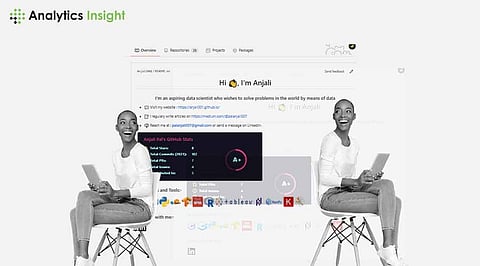

A robust data science portfolio is important in showcasing or highlighting your skills and making one stand out in a competitive job market. It is meant to show that one can solve real-world problems using data science techniques. Here's a detailed guide to building an impressive data science portfolio.
Know Whom You Are Targeting
Before you get started on building the portfolio, know your audience: Do you want to impress potential hiring managers, prospective clients, or collaborators? Knowing your audience will enable you to present in a way that will be most appealing to that particular audience.
Highlight Relevant Skills
Be sure to highlight the skills and tools that are in demand within your target industry. If you are looking to work in machine learning, then include such projects with a focus on algorithms, building, and evaluating models.
Choose Diverse Projects
Choose good projects that will help to show your versatility as a data scientist. It is supposed to contain projects related to different areas of data science: cleaning, exploratory data analysis, machine learning, and data visualization.
Show Real-World Applications
The choice of projects solving real-world problems is relevant. Such could range from anything like house price prediction or customer churn analysis. Real-world projects show potential employers that you can apply your skills to practical scenarios.
Write Full Descriptions of Your Projects
Under each project, add a description that includes the problem statement, sources of data, methodologies applied, and the results obtained. Explain why the findings are important and how they might be applied in a real-world context.
Share Your Code
Include links to your code repositories on sites like GitHub. But do make sure that it's well-documented, clean, and easy to follow. Use README files to provide context for each project and to walk people through your work.
Use Visualizations to Tell a Story
Data visualizations will help to express your results in a robust and understandable format. Results are most easily expressed through charts, graphs, and dashboards. Visualization tools like Matplotlib, Seaborn, and Tableau provide you with the means of achieving professional quality.
Highlight Key Insights
The most important focus has to be on the key takeaways of the analysis. Put these insights front and center in your visualizations.
Centralize Your Portfolio
A personal website will give you a place to put all of your projects and professional information into one area. Be sure to include an 'About Me' section, as this becomes extremely important. Tools like GitHub Pages, WordPress, and Wix could help in making a professional-looking website with less effort on web development.
Put an About Me page where you can introduce yourself, summarize your background, and mention your career goals. It gives your clients and employers an overview of the person who might be viewing your site.
Add a Blog
Also, consider including a blog on your website where you can express your views regarding the trends in Data Science, write tutorials, and elaborate more on your projects. Blogging is an expression of your expertise and passion for the domain.
Share Your Work on LinkedIn
It's a good way to network and showcase your portfolio. For every project you work on, share it, and then write a post about what you learned from the projects. Engage in data science by dropping comments or sharing relevant content.
Participate in Kaggle Competitions
Kaggle is among the most popular places for data science competitions. Entering Kaggle competitions avails you of working experience with some exciting problems, learning from other data scientists, and finally reinforcing a notable project on your portfolio.
Keep Your Portfolio Up to Date
A portfolio is ever-changing, much like you and your work. Add fresh projects and new skills as you develop them. Once you begin using new techniques or tools, create projects that demonstrate your learning ability and flexibility.
Get Feedback
Ask for feedback from colleagues, mentors, and professionals in your field. Take their suggestions to enhance your projects and presentation. Improvement at all levels is an ongoing process if you want a great portfolio.
